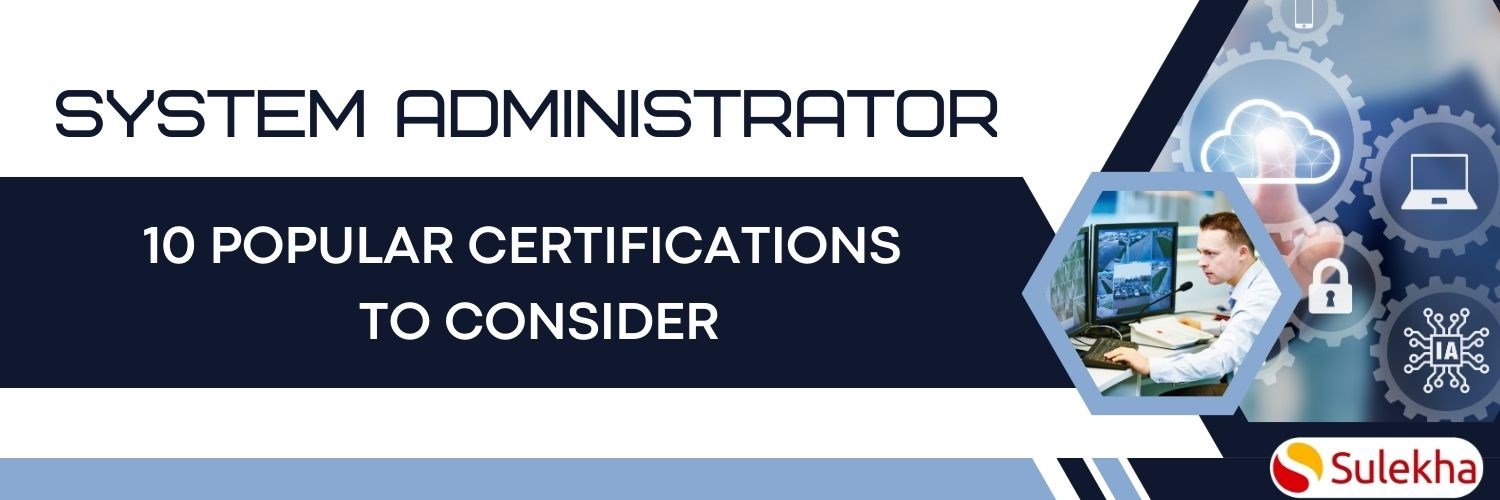What is network security Monitoring? A complete guide

Network security monitoring is crucial to safeguarding digital platforms, especially in the era of increasing security threats. In the digital world, we have been using the cloud to store our confidential data, register our details, and manage various activities such as filling out forms, submitting applications, or engaging with product purchasing platforms like e-commerce sites. While digital platforms offer numerous advantages, one major concern remains: security breaches.
Security breaches have become common in every organization. These breaches are often carried out for various purposes, including financial gain, espionage, activism, or simply the challenge and thrill of hacking.
To combat these challenges, network security monitoring is automated to oversee network devices, traffic, vulnerabilities, threats, and suspicious activities. Now, every organization utilizes network security monitoring to detect cybersecurity breaches quickly.
In this blog, we shall discuss network security monitoring and explore popular network security monitoring tools. Additionally, we will delve into the advantages of this technology, key differences between network monitoring and security monitoring, and other related insights.
What is Network Security Monitoring (NSM)?
Network Security Monitoring (NSM) is an automated system that monitors network devices, traffic, vulnerabilities, threats, and suspicious activities. Moreover, it helps in intrusion detection, offering a proactive approach to cybersecurity by analyzing network traffic, system logs, and security events to dissect anomalies and mitigate potential threats.
What are the Crucial Features of NSM
Prevention Eventually Fails:
NSM helps recognize zero-day exploits and social engineering. Moreover, it accentuates continuous monitoring and vigilance.
Threat-Centric Defense:
NSM focuses on understanding the purpose and strategies of attackers, thus leading to the implementation of strategic responses to cyber threats.
Strategic Data Collection:
Now, Modern NSM systems utilize artificial intelligence and machine learning to detect real-time network behavior, determine deviations, and adapt as traffic patterns evolve.
Continuous Feedback Loop:
NSM functions on a circular feedback model that enhances detection abilities by integrating insights from previous attack incidents into ongoing monitoring processes.
Wide Applicability:
NSM technologies support cloud infrastructure monitoring, performance, and many more.
Benefits of Network Security Monitoring
Real-Time Threat Detection: Determines threats like malware, unauthorized access, and suspicious activities promptly.
Enhanced Incident Response: Reduce the impact of security breaches and protect sensitive data.
Compliance Assurance: Meets regulatory requirements by documenting security events and incidents.
Data Protection: Identify vulnerabilities and detect unauthorized attempts to protect intellectual property.
Performance Insights: Enhances network performance by optimizing infrastructure and addressing bottlenecks.
Detection of Advanced Persistent Threats (APTs): identify and mitigate security risks or malicious activity to protect an organization's digital assets.
Software for Network Security Monitoring
To protect organizations from security breaches, Network security monitoring software is a practical implementation to analyze vulnerabilities and warn of potential security issues.
Cybersecurity alerts allow you to protect your organization from network intrusions and subsequent disasters quickly. So, what is the benefit of using this software?
- It provides real-time detection of security threats, enabling immediate action to mitigate risks. It also enhances incident response by identifying and responding to security incidents more effectively.
- The software offers improved visibility into network activity, aiding in identifying and investigating potential security issues.
- It helps organizations comply with security and privacy regulations and protects against data breaches, ultimately reducing the risk of financial and reputational damage.
- It allows for proactive security measures by identifying vulnerabilities and weaknesses in the network.
- You can also use this software to automate security alerts and reports.
- Additionally, you can utilize visual representations such as charts and graphs offered by network security monitoring solutions to identify malicious actions and address cybersecurity concerns precisely.
The Difference Between Network Monitoring and Network Security Monitoring
Network and security monitoring are two distinct but related practices crucial for maintaining a network's security and performance. Three main metrics of network monitoring measures are:
1.Network Uptime: This metric measures the percentage of time that a network is operational and available for use. It is a critical indicator of network reliability and is typically expressed as a percentage of uptime over a specific period, such as 99.9% uptime.
2.Bandwidth Utilization: Network Monitoring focuses on metrics like uptime, bandwidth utilization, and latency to ensure performance. It helps identify network congestion, peak usage periods, and potential bottlenecks impacting network performance. NSM analyzes network payloads, client-server communications, and traffic flow, focusing on detecting malicious activities and responding to cyber threats.
3.Latency: Latency refers to the time it takes for data to travel from its source to its destination across the network. It is a key performance metric for assessing network responsiveness and can impact the user experience for real-time applications such as video conferencing or online gaming.
When a network monitoring tool notices any availability, performance, or configuration issues, it can notify you by email or a short messaging service (SMS). To troubleshoot and fix issues, a network administrator must know their network's topology, configurations, performance, and security.
On the other hand, a network security monitoring system protects against potential weaknesses and attacks.
Network security monitoring differs from generic network monitoring by analyzing many factors, such as:
- Network payload
- Network protocols
- Client-server communications
- Traffic patterns
- Encrypted traffic sessions
- Traffic flow
The primary goal of network security monitoring is to detect and respond to potential cybersecurity threats within an organization's network infrastructure. This proactive approach involves continuously monitoring and analyzing network traffic, system logs, and security events to identify anomalous patterns or signs of malicious activity. By promptly detecting and responding to security incidents, network security monitoring aims to mitigate the impact of breaches, protect sensitive information, and ensure the integrity and availability of an organization's digital assets. This ongoing vigilance is essential for maintaining a robust cybersecurity posture in the face of evolving threats.
For instance, attaining a high data transfer rate is unattainable if a malicious actor inundates the network with malicious software that exploits network setups, exposing your network to vulnerabilities. Due to these reasons, it is customary for network administrators to collaborate closely with security teams to carry out multiple responsibilities and analyze results in an organized way.
Advantages of Network Security Monitoring
- Network security monitoring helps detect threats like malware, unauthorized access attempts, and suspicious activities. This proactive approach enables organizations to respond quickly and mitigate potential security breaches before they escalate.
- By continuously monitoring network traffic and security events, organizations can effectively respond to security incidents, minimizing the impact of breaches and preventing further damage to the network and sensitive data.
- Network security monitoring helps organizations meet compliance and regulatory requirements by providing visibility and documentation of security incidents and events.
- It helps safeguard sensitive data and intellectual property by identifying and addressing potential security vulnerabilities and unauthorized access attempts.
- While primarily focused on security, network security monitoring provides insights into network performance, helping organizations optimize their network infrastructure and resources.
- By identifying and addressing security threats in real time, network security monitoring reduces the risk of data breaches, financial losses, and reputational damage to the organization.
- Advanced persistent threats (APTs) often involve subtle and prolonged activities. Network security monitoring aids in detecting such sophisticated threats, preventing long-term compromises.
Simplify Security Testing
NSM tools allow you to conduct network tests with customized settings, making it easier to evaluate the robustness of your defenses. They enable proactive identification of zero-day threats and subtle activities like bandwidth hijacking and botnets. You can modify the settings in the menu using a suitable network security monitoring application. Once you have adjusted the settings according to your preferences, you can utilize the application to conduct a network test and ascertain its level of foolproofness.
Discover new threats
Given the ever-evolving nature of the cybersecurity ecosystem, it is imperative to own an intelligent tool that does not depend on recognized threats. You can consistently identify and address potentially malicious actions by implementing a robust network security monitoring solution. Network monitoring tools can aid in the detection of novel threats, such as "zero-day" assaults, which would otherwise be challenging to identify without them, by uncovering non-specific patterns.
Detect subtle threats more easily:
Certain assaults can be easily identified within the network, but others are more difficult to detect. As an illustration, an overt ransomware attack can immobilize the entire personal computer by displaying a ransom message. However, detecting bandwidth hijacking and botnets is an even more challenge.
A robust network security monitoring system enables vigilant surveillance of anomalous activities, such as bandwidth hijacking and distributed denial-of-service (DDoS) assaults.
Protecting Your Data with Parallels RAS
As we know, digital has become an indispensable part of our daily lives, but at the same time, it also has a few drawbacks. Moreover, many top companies globally rely on digitalization and simultaneously face cybersecurity attacks.
Adopting reliable and secure mandates the organization to protect its system and network. Parallels® Remote Application Server (RAS) is an all-in-one, secure-by-design desktop virtualization solution that streamlines access to corporate resources while promoting organization productivity.
Parallels RAS ensures secure remote access and desktop virtualization with technologies like:
1. TLS, FIPS 140-2 protocols
2. Multi-factor authentication (MFA)
The two above technologies utilized for data security, help consolidate IT resource management, improving and enhancing productivity and cybersecurity. Moreover, Parallels RAS is a desktop virtualization solution that consolidates the management of IT resources. Employees are provided secure access to the datacenter over encrypted connections using Transport Layer Security (TLS) and Federal Information Processing Standard (FIPS) 140-2 protocols.
The most significant features offered by Parallels RAS are secure remote access through data segregation, kiosk mode, smart-card authentication, multi-factor authentication (MFA), and clipboard redirection.
Now, finally, we shall delve into a comprehensive understanding of: what are the network security monitoring tools?
Network security monitoring tools?
Wireshark:
- Open-source packet analyzer for real-time network traffic inspection.
Snort:
- Open-source IDS/IPS with rule-based detection for network security.
Suricata:
- High-performance open-source IDS/IPS supporting multi-threading.
Nagios:
- Open-source monitoring system for comprehensive network device and service monitoring.
SolarWinds Network Performance Monitor:
- Commercial solution providing real-time network mapping and performance analysis.
Splunk:
- Versatile platform for collecting and analyzing network data with robust log management and SIEM capabilities.
Security Onion:
- Open-source Linux distribution integrating multiple security monitoring tools.
Zeek (formerly Bro):
- Network analysis framework for capturing, analyzing, and interpreting network data.
Cisco Stealthwatch:
- Commercial solution from Cisco focusing on network visibility and threat detection.
IBM QRadar:
- SIEM solution integrating log management, threat detection, and incident response capabilities.
In conclusion, network security monitoring is a proactive and indispensable component of a robust cybersecurity strategy, offering multifaceted advantages in safeguarding digital assets and maintaining the resilience of organizational networks. By integrating real-time monitoring, proactive threat detection and Artificial Intelligence-driven analysis, Network Security Monitoring (NSM) aids every big organization to protect its digital assets. So, investing in advanced NSM tools and practices is crucial to staying resilient to evolving cyber threats.
Choose a training provider to learn IT courses
Java training | J2EE training | J2EE Jboss training | Apache JMeter trainingTake the next step towards your professional goals in Information Technology
Don't hesitate to talk with our course advisor right now
Receive a call
Contact NowMake a call
+1-732-338-7323Related blogs on General to learn more

A Guide to Networking Skills: Key Traits for Effective Communication
We have basic networking knowledge but need to know how they pay for a lucrative career or how that works. A network connects two or more services to facilitate effective communication and exchange of information or data via various forms. In the pre

10 Popular System Administrator Certifications To Consider
In the ever-evolving tech landscape, the journey of a System Administrator is one of perpetual learning. Due to this, the demand for system administrator certifications proliferates as organizations seek validated expertise in managing complex IT inf

How CCNA certification helps the networking professional in career?
Networking career being one of the evergreen career with high career scope also engages certain requirements from the candidate. Certification is one of the most important one.

Incident response and forensics
Handling the security breaches over the computer network and system is a challenging and head-breaking task for computer architects.

What is Network security monitoring?
Network Security Monitoring (NSM) is widely explored by experts around the world who insists on achieving data protection and security across the internet.

What Is The Difference Between The CCNA And CCNP Certifications?
Cisco is a major producer of routers and switches that are employed in setting up a dependable and efficient network. To help the clients to choose the personnel who are capable of working with their hardware, it has established a set of certificatio

The Roadmap to Networking Career Opportunities with CISCO
The CCNA (Cisco Certified Network Associate) certification is globally recognized, as it concentrates on developing the role-based models to match the fast deployment of technologies in the modern sophisticated networking environment. Most of the ent

Learning CCNA? – Things to Keep in Mind
Certified Cisco Network Associate (CCNA) is a certification course provided by Cisco, which is the market leading vendor of the IT industry. This certification validates the ability, skill and prowess of an individual to configure, fix and troublesho

Reasons Why CCNA Certification Has an Edge Over Other Certifications
The CCNA (Cisco Certified Network Associate) certification along with the CCNP and CCIE are considered to be the most popular and sought after certifications in the IT industry. The CISCO Systems awards both dedicated and general certifications to ca

Why The Value Of CCNA Certification Is On Constant Rise?
The CCNA (Cisco Certified Network Associate) certification is emerging as the most popular IT certification in the world, as it focuses on developing role-based models to match the swift deployment of technologies in the modern sophisticated networki
Latest blogs on technology to explore

From Student to AI Pro: What Does Prompt Engineering Entail and How Do You Start?
Explore the growing field of prompt engineering, a vital skill for AI enthusiasts. Learn how to craft optimized prompts for tools like ChatGPT and Gemini, and discover the career opportunities and skills needed to succeed in this fast-evolving indust

How Security Classification Guides Strengthen Data Protection in Modern Cybersecurity
A Security Classification Guide (SCG) defines data protection standards, ensuring sensitive information is handled securely across all levels. By outlining confidentiality, access controls, and declassification procedures, SCGs strengthen cybersecuri

Artificial Intelligence – A Growing Field of Study for Modern Learners
Artificial Intelligence is becoming a top study choice due to high job demand and future scope. This blog explains key subjects, career opportunities, and a simple AI study roadmap to help beginners start learning and build a strong career in the AI

Java in 2026: Why This ‘Old’ Language Is Still Your Golden Ticket to a Tech Career (And Where to Learn It!
Think Java is old news? Think again! 90% of Fortune 500 companies (yes, including Google, Amazon, and Netflix) run on Java (Oracle, 2025). From Android apps to banking systems, Java is the backbone of tech—and Sulekha IT Services is your fast track t

From Student to AI Pro: What Does Prompt Engineering Entail and How Do You Start?
Learn what prompt engineering is, why it matters, and how students and professionals can start mastering AI tools like ChatGPT, Gemini, and Copilot.

Cyber Security in 2025: The Golden Ticket to a Future-Proof Career
Cyber security jobs are growing 35% faster than any other tech field (U.S. Bureau of Labor Statistics, 2024)—and the average salary is $100,000+ per year! In a world where data breaches cost businesses $4.45 million on average (IBM, 2024), cyber secu

SAP SD in 2025: Your Ticket to a High-Flying IT Career
In the fast-paced world of IT and enterprise software, SAP SD (Sales and Distribution) is the secret sauce that keeps businesses running smoothly. Whether it’s managing customer orders, pricing, shipping, or billing, SAP SD is the backbone of sales o

SAP FICO in 2025: Salary, Jobs & How to Get Certified
AP FICO professionals earn $90,000–$130,000/year in the USA and Canada—and demand is skyrocketing! If you’re eyeing a future-proof IT career, SAP FICO (Financial Accounting & Controlling) is your golden ticket. But where do you start? Sulekha IT Serv

Train Like an AI Engineer: The Smartest Career Move You’ll Make This Year!
Why AI Engineering Is the Hottest Skillset Right Now From self-driving cars to chatbots that sound eerily human, Artificial Intelligence is no longer science fiction — it’s the backbone of modern tech. And guess what? Companies across the USA and Can

Confidence Intervals & Hypothesis Tests: The Data Science Path to Generalization
Learn how confidence intervals and hypothesis tests turn sample data into reliable population insights in data science. Understand CLT, p-values, and significance to generalize results, quantify uncertainty, and make evidence-based decisions.